Chengzhi Liu
Seeing Far and Clearly: Mitigating Hallucinations in MLLMs with Attention Causal Decoding
May 22, 2025Abstract:Recent advancements in multimodal large language models (MLLMs) have significantly improved performance in visual question answering. However, they often suffer from hallucinations. In this work, hallucinations are categorized into two main types: initial hallucinations and snowball hallucinations. We argue that adequate contextual information can be extracted directly from the token interaction process. Inspired by causal inference in the decoding strategy, we propose to leverage causal masks to establish information propagation between multimodal tokens. The hypothesis is that insufficient interaction between those tokens may lead the model to rely on outlier tokens, overlooking dense and rich contextual cues. Therefore, we propose to intervene in the propagation process by tackling outlier tokens to enhance in-context inference. With this goal, we present FarSight, a versatile plug-and-play decoding strategy to reduce attention interference from outlier tokens merely by optimizing the causal mask. The heart of our method is effective token propagation. We design an attention register structure within the upper triangular matrix of the causal mask, dynamically allocating attention to capture attention diverted to outlier tokens. Moreover, a positional awareness encoding method with a diminishing masking rate is proposed, allowing the model to attend to further preceding tokens, especially for video sequence tasks. With extensive experiments, FarSight demonstrates significant hallucination-mitigating performance across different MLLMs on both image and video benchmarks, proving its effectiveness.
Robust Multimodal Learning for Ophthalmic Disease Grading via Disentangled Representation
Mar 07, 2025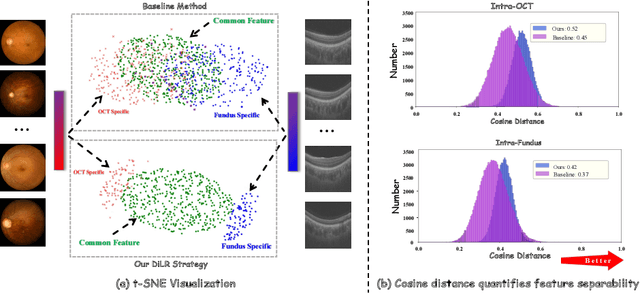
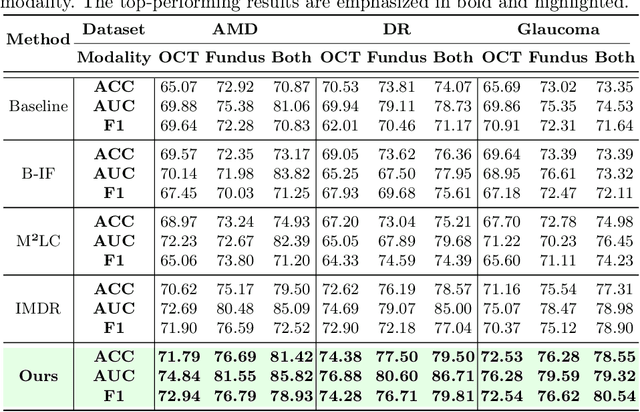
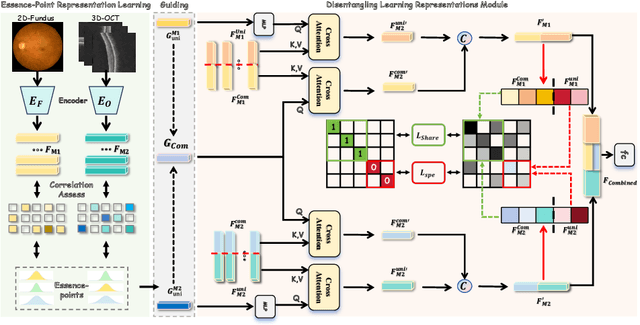

Abstract:This paper discusses how ophthalmologists often rely on multimodal data to improve diagnostic accuracy. However, complete multimodal data is rare in real-world applications due to a lack of medical equipment and concerns about data privacy. Traditional deep learning methods typically address these issues by learning representations in latent space. However, the paper highlights two key limitations of these approaches: (i) Task-irrelevant redundant information (e.g., numerous slices) in complex modalities leads to significant redundancy in latent space representations. (ii) Overlapping multimodal representations make it difficult to extract unique features for each modality. To overcome these challenges, the authors propose the Essence-Point and Disentangle Representation Learning (EDRL) strategy, which integrates a self-distillation mechanism into an end-to-end framework to enhance feature selection and disentanglement for more robust multimodal learning. Specifically, the Essence-Point Representation Learning module selects discriminative features that improve disease grading performance. The Disentangled Representation Learning module separates multimodal data into modality-common and modality-unique representations, reducing feature entanglement and enhancing both robustness and interpretability in ophthalmic disease diagnosis. Experiments on multimodal ophthalmology datasets show that the proposed EDRL strategy significantly outperforms current state-of-the-art methods.
The Hidden Risks of Large Reasoning Models: A Safety Assessment of R1
Feb 18, 2025Abstract:The rapid development of large reasoning models, such as OpenAI-o3 and DeepSeek-R1, has led to significant improvements in complex reasoning over non-reasoning large language models~(LLMs). However, their enhanced capabilities, combined with the open-source access of models like DeepSeek-R1, raise serious safety concerns, particularly regarding their potential for misuse. In this work, we present a comprehensive safety assessment of these reasoning models, leveraging established safety benchmarks to evaluate their compliance with safety regulations. Furthermore, we investigate their susceptibility to adversarial attacks, such as jailbreaking and prompt injection, to assess their robustness in real-world applications. Through our multi-faceted analysis, we uncover four key findings: (1) There is a significant safety gap between the open-source R1 models and the o3-mini model, on both safety benchmark and attack, suggesting more safety effort on R1 is needed. (2) The distilled reasoning model shows poorer safety performance compared to its safety-aligned base models. (3) The stronger the model's reasoning ability, the greater the potential harm it may cause when answering unsafe questions. (4) The thinking process in R1 models pose greater safety concerns than their final answers. Our study provides insights into the security implications of reasoning models and highlights the need for further advancements in R1 models' safety to close the gap.
Incomplete Modality Disentangled Representation for Ophthalmic Disease Grading and Diagnosis
Feb 17, 2025



Abstract:Ophthalmologists typically require multimodal data sources to improve diagnostic accuracy in clinical decisions. However, due to medical device shortages, low-quality data and data privacy concerns, missing data modalities are common in real-world scenarios. Existing deep learning methods tend to address it by learning an implicit latent subspace representation for different modality combinations. We identify two significant limitations of these methods: (1) implicit representation constraints that hinder the model's ability to capture modality-specific information and (2) modality heterogeneity, causing distribution gaps and redundancy in feature representations. To address these, we propose an Incomplete Modality Disentangled Representation (IMDR) strategy, which disentangles features into explicit independent modal-common and modal-specific features by guidance of mutual information, distilling informative knowledge and enabling it to reconstruct valuable missing semantics and produce robust multimodal representations. Furthermore, we introduce a joint proxy learning module that assists IMDR in eliminating intra-modality redundancy by exploiting the extracted proxies from each class. Experiments on four ophthalmology multimodal datasets demonstrate that the proposed IMDR outperforms the state-of-the-art methods significantly.
* 7 Pages, 6 figures
MMRC: A Large-Scale Benchmark for Understanding Multimodal Large Language Model in Real-World Conversation
Feb 17, 2025Abstract:Recent multimodal large language models (MLLMs) have demonstrated significant potential in open-ended conversation, generating more accurate and personalized responses. However, their abilities to memorize, recall, and reason in sustained interactions within real-world scenarios remain underexplored. This paper introduces MMRC, a Multi-Modal Real-world Conversation benchmark for evaluating six core open-ended abilities of MLLMs: information extraction, multi-turn reasoning, information update, image management, memory recall, and answer refusal. With data collected from real-world scenarios, MMRC comprises 5,120 conversations and 28,720 corresponding manually labeled questions, posing a significant challenge to existing MLLMs. Evaluations on 20 MLLMs in MMRC indicate an accuracy drop during open-ended interactions. We identify four common failure patterns: long-term memory degradation, inadequacies in updating factual knowledge, accumulated assumption of error propagation, and reluctance to say no. To mitigate these issues, we propose a simple yet effective NOTE-TAKING strategy, which can record key information from the conversation and remind the model during its responses, enhancing conversational capabilities. Experiments across six MLLMs demonstrate significant performance improvements.
Multimodal Situational Safety
Oct 08, 2024



Abstract:Multimodal Large Language Models (MLLMs) are rapidly evolving, demonstrating impressive capabilities as multimodal assistants that interact with both humans and their environments. However, this increased sophistication introduces significant safety concerns. In this paper, we present the first evaluation and analysis of a novel safety challenge termed Multimodal Situational Safety, which explores how safety considerations vary based on the specific situation in which the user or agent is engaged. We argue that for an MLLM to respond safely, whether through language or action, it often needs to assess the safety implications of a language query within its corresponding visual context. To evaluate this capability, we develop the Multimodal Situational Safety benchmark (MSSBench) to assess the situational safety performance of current MLLMs. The dataset comprises 1,820 language query-image pairs, half of which the image context is safe, and the other half is unsafe. We also develop an evaluation framework that analyzes key safety aspects, including explicit safety reasoning, visual understanding, and, crucially, situational safety reasoning. Our findings reveal that current MLLMs struggle with this nuanced safety problem in the instruction-following setting and struggle to tackle these situational safety challenges all at once, highlighting a key area for future research. Furthermore, we develop multi-agent pipelines to coordinately solve safety challenges, which shows consistent improvement in safety over the original MLLM response. Code and data: mssbench.github.io.
Multi-task Prompt Words Learning for Social Media Content Generation
Jul 10, 2024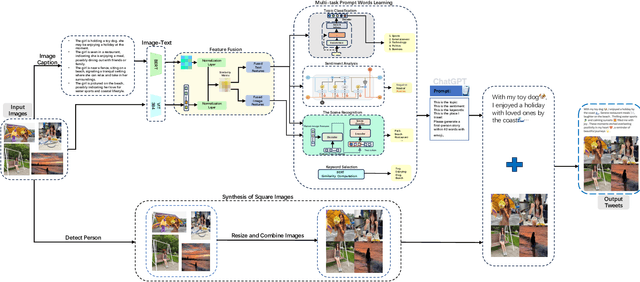
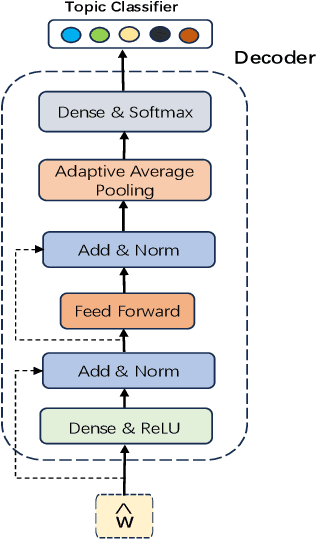
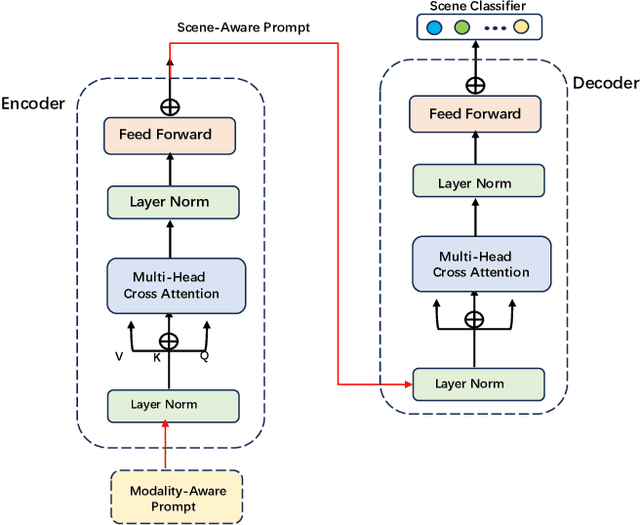

Abstract:The rapid development of the Internet has profoundly changed human life. Humans are increasingly expressing themselves and interacting with others on social media platforms. However, although artificial intelligence technology has been widely used in many aspects of life, its application in social media content creation is still blank. To solve this problem, we propose a new prompt word generation framework based on multi-modal information fusion, which combines multiple tasks including topic classification, sentiment analysis, scene recognition and keyword extraction to generate more comprehensive prompt words. Subsequently, we use a template containing a set of prompt words to guide ChatGPT to generate high-quality tweets. Furthermore, in the absence of effective and objective evaluation criteria in the field of content generation, we use the ChatGPT tool to evaluate the results generated by the algorithm, making large-scale evaluation of content generation algorithms possible. Evaluation results on extensive content generation demonstrate that our cue word generation framework generates higher quality content compared to manual methods and other cueing techniques, while topic classification, sentiment analysis, and scene recognition significantly enhance content clarity and its consistency with the image.
* 8 pages, 5 figures
Goal-guided Generative Prompt Injection Attack on Large Language Models
Apr 06, 2024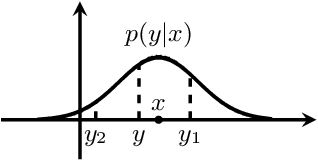
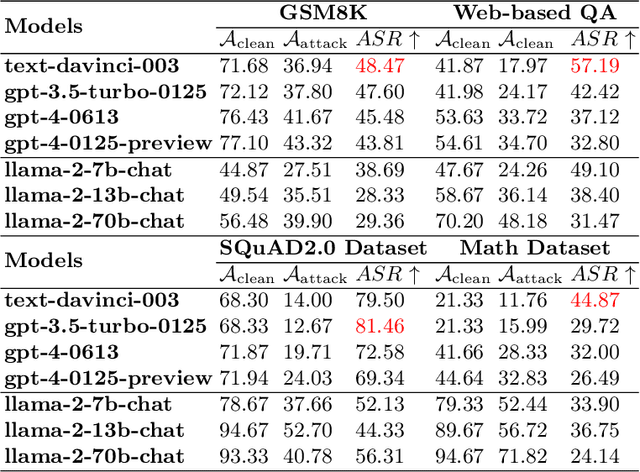
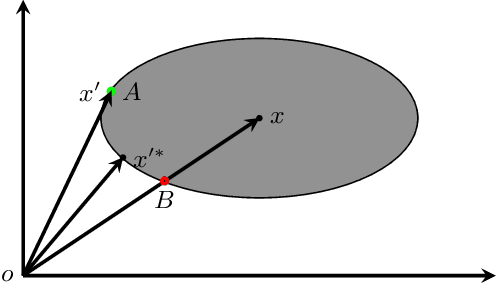
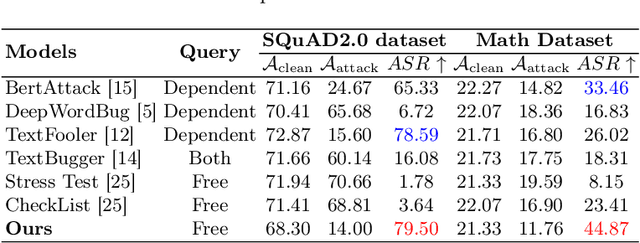
Abstract:Current large language models (LLMs) provide a strong foundation for large-scale user-oriented natural language tasks. A large number of users can easily inject adversarial text or instructions through the user interface, thus causing LLMs model security challenges. Although there is currently a large amount of research on prompt injection attacks, most of these black-box attacks use heuristic strategies. It is unclear how these heuristic strategies relate to the success rate of attacks and thus effectively improve model robustness. To solve this problem, we redefine the goal of the attack: to maximize the KL divergence between the conditional probabilities of the clean text and the adversarial text. Furthermore, we prove that maximizing the KL divergence is equivalent to maximizing the Mahalanobis distance between the embedded representation $x$ and $x'$ of the clean text and the adversarial text when the conditional probability is a Gaussian distribution and gives a quantitative relationship on $x$ and $x'$. Then we designed a simple and effective goal-guided generative prompt injection strategy (G2PIA) to find an injection text that satisfies specific constraints to achieve the optimal attack effect approximately. It is particularly noteworthy that our attack method is a query-free black-box attack method with low computational cost. Experimental results on seven LLM models and four datasets show the effectiveness of our attack method.
Time Series Forecasting with LLMs: Understanding and Enhancing Model Capabilities
Feb 19, 2024



Abstract:Large language models (LLMs) have been applied in many fields with rapid development in recent years. As a classic machine learning task, time series forecasting has recently received a boost from LLMs. However, there is a research gap in the LLMs' preferences in this field. In this paper, by comparing LLMs with traditional models, many properties of LLMs in time series prediction are found. For example, our study shows that LLMs excel in predicting time series with clear patterns and trends but face challenges with datasets lacking periodicity. We explain our findings through designing prompts to require LLMs to tell the period of the datasets. In addition, the input strategy is investigated, and it is found that incorporating external knowledge and adopting natural language paraphrases positively affects the predictive performance of LLMs for time series. Overall, this study contributes to insight into the advantages and limitations of LLMs in time series forecasting under different conditions.
MC-DBN: A Deep Belief Network-Based Model for Modality Completion
Feb 15, 2024



Abstract:Recent advancements in multi-modal artificial intelligence (AI) have revolutionized the fields of stock market forecasting and heart rate monitoring. Utilizing diverse data sources can substantially improve prediction accuracy. Nonetheless, additional data may not always align with the original dataset. Interpolation methods are commonly utilized for handling missing values in modal data, though they may exhibit limitations in the context of sparse information. Addressing this challenge, we propose a Modality Completion Deep Belief Network-Based Model (MC-DBN). This approach utilizes implicit features of complete data to compensate for gaps between itself and additional incomplete data. It ensures that the enhanced multi-modal data closely aligns with the dynamic nature of the real world to enhance the effectiveness of the model. We conduct evaluations of the MC-DBN model in two datasets from the stock market forecasting and heart rate monitoring domains. Comprehensive experiments showcase the model's capacity to bridge the semantic divide present in multi-modal data, subsequently enhancing its performance. The source code is available at: https://github.com/logan-0623/DBN-generate
 Add to Chrome
Add to Chrome Add to Firefox
Add to Firefox Add to Edge
Add to Edge